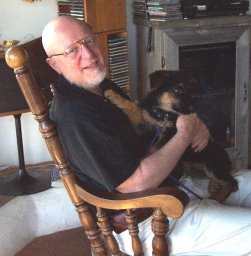If you are a writer, you may find my publication method interesting: LeanPub.com.
Those of you who teach should find my newest book interesting.
The Title is Experiential Learning: Beginning.
Experiential Learning the first volume in a series that collects and organizes more than fifty years of experience by many learning leaders using the experiential method to aid students in a variety of subjects, including, at least the following subjects:
* software development
* software testing
* anthropology
* physics
* writing
* design
* project management
* education
* medicine
* business administration
* architecture
* biology
* chemistry
* communication
* economics
* environmental science
* family therapy
* computer science
Where Can The Series Be Helpful?
At present, the Experiential Learning series is planned for three volumes. The first volume—Beginning—concerns getting started: starting using the experiential method, starting to design exercises, and getting a particular exercise off to a good start.
It should be particularly helpful for short classes—a day or two, or even an hour or two—though it could be for starting to use experiential parts of a longer workshop consisting of both short and long experiential pieces as well as more traditional learning models.
The second volume—Class—guides the reader in constructing, delivering, and—most importantly—debriefing classes consisting entirely (or almost entirely) of one or more experiential exercises.
Volume Three—Simulations—takes up the possibilities for longer classes and longer exercises.
What Can Be Learned from the Series?
At the beginning of our classes, we generally gather the students' hopes for what will happen as a result of the class. (You can read more about this practice in the section called Requirements Gathering.) We haven't figured out how to gather requirements from each reader of a book, but we do offer a class about experiential learning, and from the participants in these classes, we've developed some ideas of what most of our students want.
So, what can you hope to gain from reading these volumes? We've made a list of hopes distilled from these classes:
- Learn practical knowledge about designing experiential exercises.
- Expand my understanding of what participants experience during experiential exercises.
- Unlearn things that interfere with effective experiential learning.
- Help to expand my "big picture" about this topic.
- Link to other knowledge to help increase my effectiveness.
- Figure out if students are really learning.
We've used this list to guide us in deciding what to include, and as with any experiential exercise, this book may lead its readers to many additional lessons we never planned for them.
Experiential Exercises
In the final analysis, a book about the effectiveness of experiential exercises may seem to be a paradox, but there's a learning there, too.
We are not claiming that the experiential method is the only way to learn. We're not even claiming that experiential exercises always teach anything worthwhile, or that students never take away erroneous or vacuous learnings. We're merely saying that we have found this approach to be one more tool for our teaching repertoire—a tool that has been strikingly effective for us as both teachers and learners. We hope it turns out that way for you, as well.


